#lakshmi palace
Text

Lakshmi Vilas Palace, Vadodara, Gujarat, India
#art#design#architecture#history#luxury lifestyle#style#luxury house#luxury homes#palace#lakshmi vilas palace#vadodara#india#gujarat#patio#fountain#luxury home
985 notes
·
View notes
Text
Welcome to the TPQ Character Tournament! We will make all of your favorite characters fight to the death :)
(Hosted by @parrotxx who does not know how to do this)
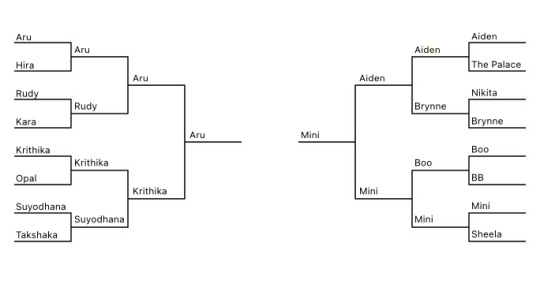
(You’re welcome for these pairings I’m sure you love how all of the best characters are being pitted against each other)
@sleep-can-wait @ssj2hindudude @queenofapeacefuldawn @the-princess-fangirl @pinkroses23 @namesarehard123 @autumn-equinox-04 Hi I’m going to annoy you with these tags mwahahahaha
Round 1:
Aru vs Hira (1.0)
Rudy vs Kara (1.2)
Krithika vs Opal (1.3)
Suyodhana vs Takshaka (1.4)
Aiden vs The Palace of Illusions (1.5)
Nikita vs Brynne (1.6)
Boo vs BB (1.7)
Mini vs Sheela (1.8)
Round 2:
Aru vs Rudy (2.0)
Krithika vs Suyodhana (2.1)
Aiden vs Brynne (2.2)
Boo vs Mini (2.3)
Round 3:
Aru vs Krithika (3.0)
Aiden vs Mini (3.1)
Round 4:
Aru vs Mini (4.0)
THE WINNER IS ARU SHAH!
#aru shah#tpq#the pandava quintet#hira#rudy#prince rudra of naga loka#kara#krithika shah#opal#suyodhana#takshaka#aiden acharya#the palace of illusions#nikita jagan#brynne rao#brynne tvarika lakshmi balamuralikrishna rao#boo#baby boo#bb#mini kapoor mercado lopez#sheela jagan
57 notes
·
View notes
Text
Dream Of Having A Royal Wedding? Here Are Heritage Palaces & Venues That Are Just Perfect. Stay Tuned To ShaadiWish For Latest Trends And Ideas.
#Chomu Palace#Heritage Palace#Heritage Palace Venues#Heritage Palaces & Venues#Heritage Properties for Weddings#Heritage Venues#Heritage Wedding#Heritage Wedding Ideas#Heritage Wedding Venue#Heritage Wedding Venues#Hotel Fateh Garh#Jaipur#Jaisalmer#Jodhpur#Lakshmi Vilas Palace#Luxurious Wedding Venues#Mihir Garh#Neemrana Fort#Palace Wedding Venues#Rajasthan#Rambagh Palace#Rohet#Royal Palaces#Royal Wedding Venues#Samode Palace#Six Senses Fort#Suryagarh#Taj Lake Palace#Talai Bagh Palace#The Leela Palace
0 notes
Text
#Lakshmi Vilas Palace#Sayaji Baug#Baroda Museum#EME Temple#Inorbit Mall Vadodara#Mandvi Gate#BAPS Shri Swaminarayan Mandir#Maharaja Fateh Singh#Sursagar Lake#Surya Narayan Temple#Maharaja Sayajirao University#Culture Festival#Vadodara International Art#VadFest#Navratri festival
0 notes
Text
#lakshmivilaspalace#lakshmi vilas palace#baroda#sayajirao gaekwad#gaekwad#indian palace#lakshmi vilas baroda#indian palace history
0 notes
Text
𝐒𝐀𝐀𝐖𝐀𝐑𝐈𝐘𝐀
— Krishna x Rukmini

SYNOPSIS : Krishna has yet to meet his Sri but that doesn't mean that he does not know her heart.
KAMAL'S NOTE : Hey guys, I'm back with another RukminiShyam fic. This is a really short one.
Sakhi = Friend, Kaki = Aunty, Priye = Beloved, Sri = Mahalakshmi/Rukmini, Saawariya = Krishna/Tall, Dark & Handsome, Jaganath = Vishnu, Jagatmata = Lakshmi.
𝐍𝐀𝐕𝐈𝐆𝐀𝐓𝐈𝐎𝐍 // 𝐏𝐑𝐎𝐒𝐄

"Why do you look so downhearted, sakhi?"
Malini asked when she noticed the princess sitting on the window seat with a frowning face. Rukmini casted her a side glance before looking outside again, showing her friend that she had done something which upsetted the princess.
Malini thought back about the past events but she could not think about anything bad enough to upset Rukmini. Rukmini was not someone who would care about small mistakes.
Malini dropped the cloth she was folding and rushed up to Rukmini, "Sakhi, did I do something wrong?"
Rukmini nodded her head in 'yes'. Her lips curled up in visible a pout.
"What is it?"
Rukmini turned to Malini, "It rained this afternoon, right?" Malini nodded her head hasitentaly, she could already guess where this was going, "But none of you called me? Mina kaki told me, she saw you, Vijaya, Ridhima playing in the rain. Without me."
Rukmini snapped her face towards the window again. To be honest, Malini did feel a little bad for her sakhi. She knows just how much Rukmini loved rain.
Malini grabbed Rukmini's hand, "Please, don't be mad Vidharbhi. You were sleeping at that time and we didn't want to disturb you. You looked too peaceful sleeping."
"Stop buttering me." Rukmini muttered under her breath, "You are not the makhan chor."
"Ohhoo." Malini teased Rukmini, "Then why don't you tell you makhan chor to make it rain again?"
"D-Don't speak nonsense." Heat rushed up Rukmini's neck and cheek, colouring her red.
If I ask them he will, right?
Time passed in a flash and it was already night. Malini had left after making sure Rukmini was not mad at her. Of course she wasn't mad, Rukmini can never be angry with her sakhis.
Stars surrounded the moon in the sky. The kingdom of Vidarbha was lightened with lamps and lanterns. In the royal palace, Rukmini sat on the bed, reading a chapter of a novel before going to sleep as per her daily routine.
Suddenly, a sweet flute music started playing. The candle flickered on the nightstand when a gush of cold wind blew past the blinds, followed by the roaring sound of thunder. The thought of raining again made her lips curl up in a smile. Madhav!
Closing the book, Rukmini dropped it on the bed and rushed up to the window, pulling back the red and golden curtains. The one sparkling was now covered in kala megha. In no time, one raindrop hit the ground, then another and then another till it started pouring and wetting everything.
Rukmini grabbed the fabric of her skirt, lifted it up, and ran out of the room. Her feet stopped when it reached the garden. Standing in the middle of the garden closed her eyes and tilted her back. She raised her hand, palms facing the sky.
Rukmini felt the cold drops hitting her golden smooth skin. She felt his love pour on her in the form of rain. In an instant her long black hair soaking all the rain. They stick to her skin like glue. A sudden burst of joy hit her heart.
The surroundings disappeared. Only the sound of rain mingling with the sweet flute and the thought of her beloved. Her body moved on its own, spinning in circles. Soft laughs escaping her heart. The long skirt and her now wet hair whirling with her. The chiming of anklets joining the moment.
Rukmini danced without any care for the world. Between the colourful flowers Rukmini bloomed like a lotus does between dirt. Spinning, Rukmini bumped into something hard. She instantly grabbed it to steady herself. As she was about to open her eyes a hand palmed her eyes and another one wrapped around her waist.
"Mm-mm. It's not the time yet, priye." He teased her.
Rukmini huffed and shook her head, "Even now you are teasing me, Madhav."
"Just wait a little more? The day is near." Madhav said with a plea hidden in his voice.
"For you, Saawariya." She replied softly.
Krishna released Rukmini before grabbing her hand in his, He started twirling her, "So, is my beloved still sad that she couldn't dance in the rain earlier?"
Rukmini laughed, following his lead, "How can I be sad when you are here?"
The garden filled with laughter of two eternal consorts. The nature, the rain and the life witnessed their Jagannath and Jaganmata relish the moment. They witnessed Krishna doing maya leela for his Sri. They witnessed Lakshmi with her Narayan. They witnessed Rukmini putting all her trust in him and going along wherever he takes her.
Time flew by in a blink of an eye and it was close to dawn. But neither of them wanted to stop. Rukmini wanted to be with him as much as possible and Krishna wanted that just as much but that was not possible and they both knew that.
"Rajkumari Rukmini!" A panicked servant called and Rukmini's hand slipped off from Krishna's. Rain gradually came to a stop.
The smile never left her face as servants crowded her, throwing a warm and dry cloth over her shoulder. They started dragging her into the palace before she caught a cold.
Rukmini looked back where Krishna was supposed to but was now empty. Then Rukmini looked in her hand, the peacock feather he left behind. Only one man dazing in her head.
Saawariya.
Madhav.
Murli.
Krishna.
Krishna.
"KANHA!" Balram shouted, snapping his brother's attention, "What are you doing here at this time?"
Balram went out for a walk because his sleep broke early only to find his brother sitting on a stone, playing flute without any break and when he called him, Krishna didn't even hear him.
"Ji, Dau?" Krishna jumped down from the stone.
"What are you doing here?"
"Prem, Dau. Prem. Aap nehi samjhenge." Krishna gave him a mischievous smile before marching towards the castle.

© 𝐊𝐑𝐈𝐒𝐇𝐀𝐊𝐀𝐌𝐀𝐋 𝟐𝟎𝟐𝟑, 𝐀𝐋𝐋 𝐑𝐈𝐆𝐇𝐓𝐒 𝐑𝐄𝐒𝐄𝐑𝐕𝐄𝐃 — all content rights belongs to KRISHAKAMAL. Do not plagiarize any works and do not repost or translate onto any other sites.
All the rights and credits of the characters, gifs, songs and pictures used here belongs to their rightful owners.
#—krishakamal#desiblr#krishmini#hinduism#krishna#hindublr#rukmini#desi tumblr#gopiblr#kamal writes#desi tag#shri krishna#krishna x rukmini#krishnablr#rukmini x shyam#rukminikrishna#Rukmini madhav
58 notes
·
View notes
Text
As the peacock fly

I had wanted to take a photo of indian peacocks actually flying for years. The large and heavy birds with their train of feathers are able to fly, but often they prefer walking. Flying is hard work.
Not this one. He and his flock of peafowls where walking on the roofs of the buildings of the Lamido palace in Ngouandéré. Getting around meant flying. And I spent some quality time walking after them waiting for the jump and flight.
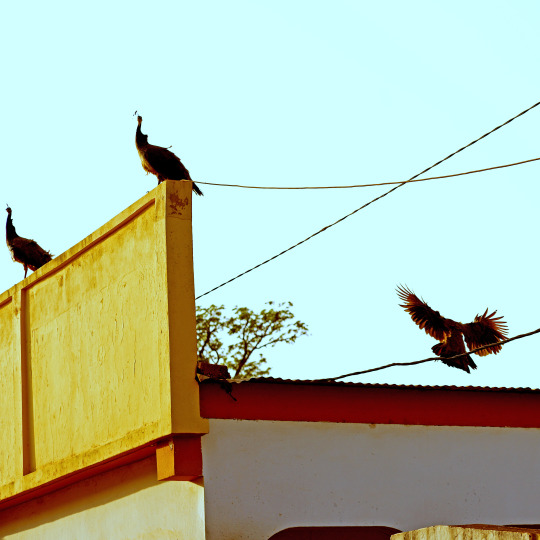
The local chieftain/king/Lamido in Nguandere had this old, classic symbol of power and wealth - peacocks wandering free in his private gardens.
They are not elegant flyers.
Royal symbol
The indian name for peafowl is Mayura, meaning killer of snakes. Understandably, a fashion statement that is actually useful probably help them being closely connected to culture and power.
Killing of snakes is also symbolic for cycling of time.
According to myths, the Mayura was created by feathers from Garuda, a highly important birddemigod in hinduism and buddhist culture.
Lakshmi, the consort of Vishnu, have peafowl as her symbol.
#As the peacock fly#roadtrip#birdphotography#birdflight#peacock#powersymbol#2015CE#colours#Indian#peafowl#Pavo#cristatus#blue#sun#city#art#streetlife#Kamerun#cameroon#africa#animalphotography#limbe#lamidat#ngaoundere#streetphotography
65 notes
·
View notes
Text
@kanhapriya you were very excited for this. I hope you don't mind me tagging you and hope this reaches your expectations
=================================
It all started on late afternoon a week ago when Lakshmi got a call from Ram.
"Do you have holi appropriate clothing for Dhuleti celebration?" He'd asked her after all the pleasantries.
And so had begun the lecture on the huge difference between Holi and Dhuleti and how her husband loathes wearing white on Holi and how it's reductive to wear a whole new spotless white outfit only for it to get drenched in colours of all kinds. Lakshmi had agreed, obviously, he was being very logical about it.
And thus began the search for ratty-but-respectable clothes for Lakshmi to wear on the Dhuleti celebration which would be held at the palace grounds and would be grander than ever as it is their first celebration after their marriage and Lakshmi's organisation for animals, Shashwat, will be the beneficiary of the event income.
Lakshmi is sure that Veer, Ram's manager, tattled on them to Maharani Radha.
Maa and Ram have been discussing the same with each other for the past ten minutes and now the conversation has shifted to a half Gujarati, half Hindi mix that Lakshmi doesn't even bother to follow.
Matar paneer is a better focal point, in her very humble opinion.
"You both are going to be in the spotlight, that's why I'm trying to shove some sense into you!" Maa says, glaring at Ram. She turns to Lakshmi,"You understand what I'm saying, beta, don't you? Wear your old clothes next year, it's your choice, but forgive me some grey hair this year, please."
"But, Mummy, it's a waste of time and resources to buy new clothes only to wear them once!" Ram replies, absently adding some salt to his matar paneer.
"Then I'll make a pochaa out of your clothes, bloody! Do as your mother says, for once, child!"
Lakshmi snickers and Maa gives her a conspiratory smirk while Ram looks on in betrayal.
Lakshmi shifts the conversation to the previous Dhuleti celebrations and what she should expect from them to save her husband some strife.
She often forgets he is a menace on his own.
____________________________________________________
If she didn't trust him more, Lakshmi would say that Ram is mostly doing this because he's trying to give Veer an aneurysm.
He found some of his old clothes that already have stains on them. The stains are minor, Lakshmi will admit freely. He likely forgot those clothes exist at all after putting them aside and Veer likely hid them away so Ram wouldn't insist on wearing them.
Lakshmi notes that all the stained kurtas are suspiciously floral printed.
She looks at Veer in suspicion, but he's too flustered trying to stop Ram from noticing her look.
"Your highness, please," Veer says, trying hysterically to stop Ram in a way that wouldn't end up with Ram tripping,"Your mother will be furious with me!"
"What is one to do, Veer?" Ram asks dramatically, taking a split second look at Lakshmi as she walks beside him,"My wife and I need clothes for Dhuleti and Mummy wouldn't let us wear our home clothes. I must settle for my older clothes and my darling and most understanding wife must settle for wearing my kurta."
"These are already stained," Lakshmi adds her two cents, absolutely enjoying the feel of a particular chikankari kurta in her hands that she will surely steal for comfort purposes,"This way, we will maintain decorum and also be more environmentally aware!"
Veer's eyes widen. "Not you too, your highness! Please, you know these clothes were set aside for donation."
"Yes, of course," she replies, pretending to be incredulous,"We're not going to wear all of these kurtas together, Veer, come on."
Ram stops in front of a door and pushes it open with his foot, hands loaded with different kurtas and t-shirts.
The people inside the laundry room all freeze as they see the Crown prince, the prince consort, and the crown prince's manager enter the laundry room; of which, the couple have various clothes in their arms.
An older woman comes rushing towards them with two empty baskets. Lakshmi somehow manages to grasp one of the baskets and puts it on the ground, dumping the clothes from her arms to the basket.
"Gently, please!" Ram calls out dramatically again,"I love my clothes as much as I love you!"
Lakshmi raises an eyebrow.
"Not as much, obviously, I misspoke." He corrects himself sheepishly, painstakingly putting the clothes in his arms in the basket one by one. Lakshmi decides to be petty enough to not help him.
"Your highness, you? Here?" The woman doesn't seem to be able to process what exactly is happening and Lakshmi pities her.
"We are so sorry to barge in on your work like that," she says,"We just have some clothes to wash and we'll be out of your hair as soon as possible. I am Lakshmi and you are?"
"Kalpana, your highness. Here, I'll take the clothes and return them to you."
"You don't have to do that at all, Kalpana ji," Ram says, making the poor woman freeze mid motion. "Mahadev has given us a couple of hands each, we can wash the clothes ourselves, if you'd only be so gracious to guide us to an empty washing machine."
Kalpana fumbles and looks at Veer for a split second before moving aside and leading them to a corner with an empty washing machine. Lakshmi smiles at her in thanks. "Thank you, Kalpana ji. You can go back to your work, we shan't delay you anymore."
She nods wordlessly and moves away. Veer continues to look in with trepidation as Ram and Lakshmi push up the sleeves of their tshirts.
Ram gives her a grin that tells her just how much he's enjoying this and Lakshmi, with agreement of the other workers, plays old Bollywood songs while the machine is on.
Ram drags her in a makeshift ballroom dance and she laughs at his dramatics, absolutely besotted with her husband.
____________________________________________________
Ram wears his bleached and washed white shirt and Lakshmi wears one of his floral kurtas for Dhuleti.
Maa sighs and smiles tiredly at the two of them.
#desiblr#suffer ye suhana nahi#desi tumblr#royalty au#royal au#indian royalty#writers on tumblr#original work
25 notes
·
View notes
Text



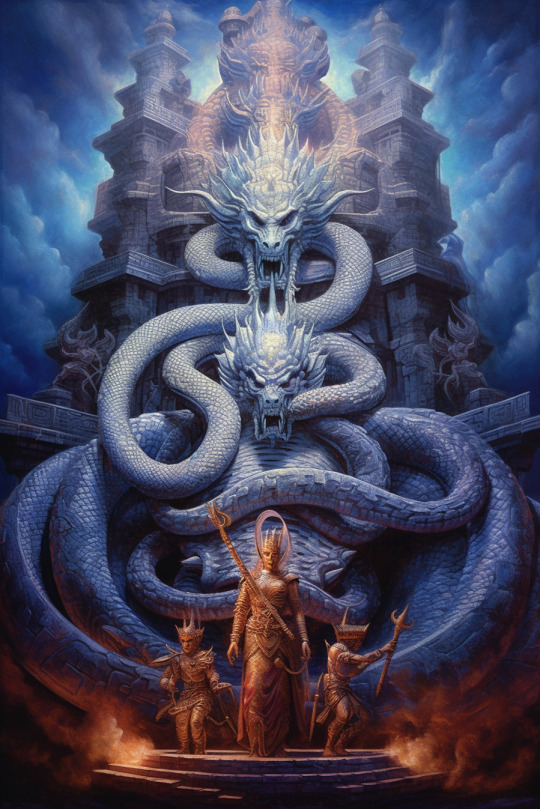
Vaikuntha
Celestial Palace of Lord Vishnu ॐ
Talon Abraxas
Vaikuntha (Sanskrit वैकुंठ, vaikuṃṭha), Param Padam (‘supreme abode’), or Paramapadam is the home of Vishnu. It is the eternal abode of Narayana or Vishnu or Hari, his consort Lakshmi, and Shesha, upon whom they rest. In most of the extant Puranas, and Vaishnava traditions, Vaikuntham (Vishnuloka)is located in the direction of the Makara Rashi (Shravana Zodiac) which coincides with the Capricorn constellation. Vishnu's eye is supposed to be located at the South Celestial Pole as well.
41 notes
·
View notes
Text
Krishna Leela (Part 1)
After Krishna built the City of Dwaraka & had his entire clan moved to the island fortress
He was at liberty to see to his own personal affairs—
There was the Princess Rukmini, she had the character to match loveliness of her face.
Since childhood she had grown up hearing stories of Krishna and vowed that she would marry none other than Krishna.
Her father and her grandfather were very happy with her choice.
Many were the Princes who aspired for her hand however she did not give a thought to any—
Since the age of five her heart was fixed on Krishna.
Sage Narada used to visit the palace often and would regale her with stories of Krishna who was an incarnation of Vishnu.
[ Krishna is upheld as Purna-Avatar, yes avatar is a Sanskrit word mentioned in Vedic texts, he is regarded as Purna incarnation of Vishnu as he was completely aware of his Divinity ]
[ Rama one of the previous Vishnu avatars wasn’t well aware of his divine origins ]
She herself [ Rukmini ] was an incarnation of Goddess Lakshmi, consort of Vishnu.
Years passed and she was entirely immersed in divine nectar of love!
At the marriageable age her brother without consulting either parents or her arranged a SwayamVara [ a wedding ceremony ]
[ In a SwayamVara many kings are invited and the bride could choose among them ]
[ It is an ancient Vedic practice ]
However, he didn’t want her to marry Krishna.
All the arrangements were made and invitations were sent to all places except Dwaraka. [ City of Krishna ]
She was horrified when she heard this and pleaded with her father to intercede but he was too old and frail and was a ruler in the name alone.
#desi dark academia#india#indian academia#sanskrit#indian aesthetic#indian poets#desi women#indian girl#south asian#scholary academia#Krishna#Krishna Leela#हिन्दू#Hindu mythology
27 notes
·
View notes
Text

Lakshmi Vilas Palace, Gujarat
The residence of the royal family of Baroda, the Lakshmi Vilas Palace was built by Maharaja Sayajirao Gaekwad III in 1890, with Major Charles Mant as the chief architect. The palace houses several historical structures like the MotiBaug Palace and the Maharaja Fateh Singh Museum building. It is also home to the Moti Bagh Cricket Ground, the offices of the Baroda Cricket Association and rare indoor teak floored tennis court and badminton court.
Built in over 500 acres, it is said to be four times the size of Buckingham Palace. The elaborate interiors boast well-maintained mosaics, chandeliers and artworks, as well as a highly impressive collection of weaponry and art.
2 notes
·
View notes
Text
Introduction:
Tanjore Painting is a culturally rich art form originating from the city of Thanjavur in Tamil Nadu, India. Also known as Tanjore Painting or Thanjavur Painting, this traditional art form has been passed down through the generations and continues to be practiced and admired to this day. Let us dive deeper into the world of Tanjore Paintings and uncover the beauty and significance behind this unique art form.
History and Origins:
Tanjore Painting can be traced back to the 16th century during the reign of the Chola dynasty in South India. It was initially created as a way to decorate the walls of temples and palaces with intricate and colorful depictions of Hindu gods and goddesses. Over time, it evolved from being solely a religious art form to also depicting secular subjects like portraits and landscapes.
Distinct Features of Tanjore Paintings:
One of the most notable features of Tanjore Paintings is the use of vibrant colors and intricate detailing. The paintings often have a 3D effect and are adorned with semi-precious stones, glass beads, and gold leaf work. The figures in the paintings are depicted with large eyes and a hint of smile, giving them a divine and serene appearance.
Traditional Techniques Used:
Tanjore Paintings are created using a unique technique that involves multiple layers. The base is made of cloth or wood, which is then coated with a mixture of limestone and tamarind seed paste. This gives the painting its distinctive texture. The artist then sketches the outline of the subject using natural dyes made from flowers and herbs. The final step involves adding gold leaf work and embellishments to enhance the beauty of the painting.

Materials Used in Tanjore Painting:
Tanjore Paintings are created using a variety of traditional materials such as natural dyes, limestone, tamarind seed paste, gold leaf, and semi-precious stones. These materials not only add to the beauty of the paintings but also make them durable and long-lasting.
Themes and Subject Matter:
The subjects of Tanjore Paintings are mainly religious in nature, with Hindu gods and goddesses being the primary focus. The most commonly depicted deities are Lord Krishna, Lord Ganesha, Goddess Lakshmi, and Goddess Saraswati. However, contemporary Tanjore Paintings also feature secular subjects like portraits, nature, and historical events.
Significance of Tanjore Paintings:
Tanjore Paintings hold a significant place in the Indian culture. They are not just beautiful pieces of art, but also hold religious and spiritual significance. These paintings are believed to bring prosperity, good luck, and positive energy to the space they are displayed in. They are not just a decoration, but a symbol of devotion and faith.
Modern Adaptations and Evolution:
While the traditional techniques and themes of Tanjore Paintings remain the same, contemporary artists have begun to experiment with the art form by incorporating new elements and styles. Some artists combine Tanjore Painting with other art forms like Madhubani and Warli to create unique and fusion pieces. This has not only given a new dimension to Tanjore Painting but also made it more accessible to a wider audience.
How to Identify an Authentic Tanjore Painting:
With the increasing popularity of Tanjore Paintings, it is important to know how to identify an authentic piece. The key aspects to look for are the use of traditional materials, intricate detailing, and a clear depiction of Indian gods and goddesses. It is also important to purchase from a reputable source or directly from the artist to ensure the authenticity of the painting.
Conclusion:
Tanjore Painting is a beautiful and culturally significant art form that has stood the test of time. With its vibrant colors, intricate detailing, and rich history, it continues to capture the hearts of people around the world. By preserving and promoting this traditional art form, we can ensure that its legacy lives on for generations to come.
0 notes
Text
Discover Rajasthan: 7-Day City Itinerary
Rajasthan, the land of kings, entices travelers with its vibrant culture, majestic forts, and opulent palaces. A Rajasthan budget tour promises a journey through history, tradition, and architectural marvels. With a carefully crafted 7-day itinerary, travelers can immerse themselves in the essence of this royal state, exploring its captivating cities and iconic landmarks.
Day 1: Arrival in Jaipur - The Pink City Welcome
Your Rajasthan holiday tour begins as you arrive in Jaipur, the capital city known for its distinctive pink hue. Jaipur welcomes you with open arms, offering a glimpse into its rich heritage and royal past. Begin your exploration with a visit to the majestic Amber Fort, a UNESCO World Heritage Site renowned for its stunning architecture and intricate design. Marvel at the grandeur of Hawa Mahal, the Palace of Winds, known for its unique facade adorned with numerous windows.
In the evening, stroll through the bustling streets of Jaipur and indulge in shopping for traditional handicrafts, textiles, and jewelry at Johari Bazaar and Bapu Bazaar.
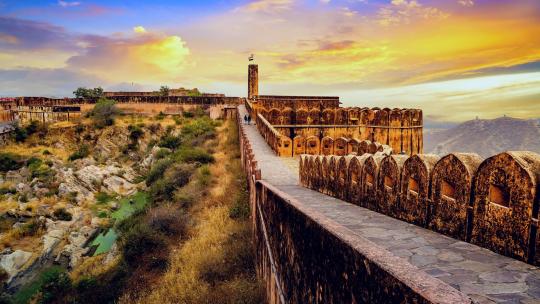
Day 2: Jaipur - City of Palaces and Temples
Embark on a heritage tour of Jaipur as you delve deeper into its architectural wonders. Explore the City Palace, a magnificent complex featuring courtyards, gardens, and museums showcasing royal artifacts and costumes. Don't miss the Jantar Mantar, an astronomical observatory boasting of ingenious instruments dating back to the 18th century.
In the afternoon, pay homage to the divine at the Birla Temple, an exquisite white marble shrine dedicated to Lord Vishnu and Goddess Lakshmi. Experience the serenity and spirituality amidst the ornate carvings and peaceful surroundings.
Day 3: Enchanting Udaipur - The Venice of the East
Bid farewell to Jaipur as you journey towards the enchanting city of Udaipur, often referred to as the Venice of the East. Nestled amidst the Aravalli Hills, Udaipur mesmerizes visitors with its scenic lakes, lush gardens, and majestic palaces. Begin your exploration with a visit to the iconic City Palace, a sprawling complex overlooking Lake Pichola, adorned with intricate architecture and panoramic vistas.
Explore the serene Jag Mandir Palace, located on an island in Lake Pichola, and soak in the tranquil ambiance surrounded by pristine waters. Conclude your day with a leisurely boat ride on Lake Pichola, witnessing the ethereal beauty of Udaipur at sunset.
Day 4: Cultural Immersion in Jodhpur - The Blue City
Travel onward to Jodhpur, the captivating city renowned for its azure-hued houses and imposing forts. Begin your exploration with a visit to the majestic Mehrangarh Fort, perched atop a rocky hill, offering panoramic views of the city below. Explore the intricately decorated palaces, courtyards, and museums within the fort complex, delving into Jodhpur's royal legacy.
Stroll through the bustling lanes of the old city, adorned with vibrant markets offering a myriad of handicrafts, textiles, and local delicacies. Explore the vibrant Ghanta Ghar market and soak in the colorful atmosphere of this bustling city.
Day 5: Mystical Jaisalmer - The Golden City
Continue your Rajasthan odyssey as you journey towards the mystical city of Jaisalmer, known for its golden sandstone architecture and desert landscapes. Explore the majestic Jaisalmer Fort, a UNESCO World Heritage Site, rising like a golden mirage amidst the Thar Desert. Wander through the narrow lanes of the fort, adorned with intricately carved havelis, temples, and palaces, reflecting the city's rich heritage.
Experience the magic of the desert with an exhilarating camel safari amidst the rolling sand dunes of the Thar Desert, witnessing the mesmerizing sunset painting the sky in hues of orange and gold.
Day 6: Bikaner - Gateway to the Thar Desert
Journey to Bikaner, the vibrant desert city known for its magnificent forts, opulent palaces, and delectable cuisine. Explore the majestic Junagarh Fort, an architectural marvel adorned with intricate carvings, frescoes, and marble palaces. Discover the rich cultural heritage of Bikaner at the Lalgarh Palace, showcasing a blend of Rajput, Mughal, and European architectural styles.
Indulge in a culinary adventure as you savor the flavors of Bikaner's famous snacks, including the iconic Bikaneri bhujia and delectable sweets.
Day 7: Return to Jaipur - Farewell to Rajasthan
As your Rajasthan holiday tour draws to a close, return to Jaipur, bidding farewell to the enchanting cities and vibrant landscapes of this royal state. Reflect upon the memories of your journey as you embark on your onward travels, carrying with you the timeless charm and rich heritage of Rajasthan.
In conclusion, a 7-day city itinerary through Rajasthan offers a captivating glimpse into the majestic forts, opulent palaces, and vibrant culture of this royal state. Embark on this unforgettable journey with a trusted travel agency in Rajasthan and immerse yourself in the timeless charm of the land of kings.
0 notes
Text
Journey of the Soul: Golden Triangle Tour with Temples in India
India invites visitors from all over the world to experience its ageless wonders. It is a country with a rich history, a dynamic culture, and a deep spirituality. The Golden Triangle Tour, which connects Delhi, Agra, and Jaipur, is one of the most popular travel routes. Although this route is well-known for its famous landmarks, such as the Taj Mahal and Jaipur's Hawa Mahal, the Golden Triangle Tour with Temples is an alternative that deepens the cultural discovery.
The Golden Triangle Tour India: A Journey of Culture and History
The traditional Golden Triangle Tour begins in Delhi, the capital city. Here, attractions like India Gate, Qutub Minar, and the busy lanes of Chandni Chowk showcase the fusion of old and new. As one moves south, Agra greets visitors with the captivating Taj Mahal, an enduring symbol of love. The trip then proceeds to Jaipur, often referred to as the Pink City, where visitors may explore the architectural wonders of the Hawa Mahal, City Palace, and Amber Fort.
Enhancing the Experience: Temples Along the Way
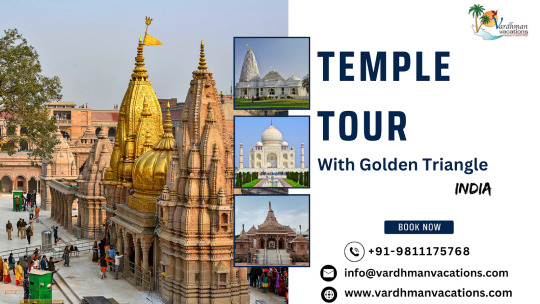
A comprehensive experience is offered by the Golden Triangle Tour With Temples to those looking to connect more deeply with India's spiritual history. Stops at historic temples interspersed throughout the itinerary provide you with an insight into the nation's spiritual fabric as you travel the history trail.
Akshardham Temple, Delhi
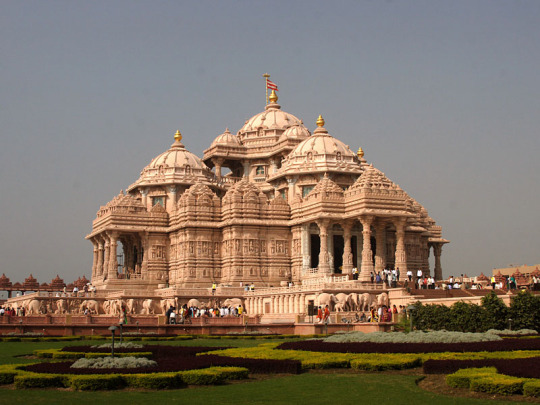
Akshardham Temple, a modern architectural masterpiece in Delhi, is the starting point of the spiritual trip. The temple complex, which is devoted to Lord Swaminarayan, blends traditional craftsmanship with modern architecture. A tranquil haven in the middle of the busy city, Akshardham is known for its finely carved interiors and captivating musical fountain performance.
Birla Temple, Jaipur
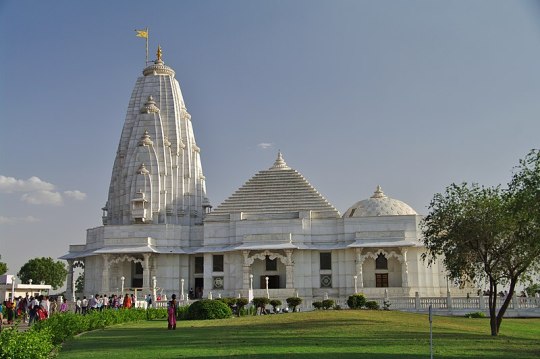
In Jaipur, the Birla Temple, also known as the Lakshmi Narayan Temple, is a magnificent white marble building that combines modern and ancient Rajasthani architectural traditions. The temple, which is devoted to Lord Vishnu and Goddess Lakshmi, is a tranquil sanctuary in the middle of the bustling Pink City because of its serene atmosphere and exquisitely carved sculptures.
Govind Dev Ji Temple, Jaipur

Inside the City Palace complex, the Govind Dev Ji Temple adds another dimension to Jaipur's spiritual experience. For devotees, this temple, which is devoted to Lord Krishna, is extremely important. Visitors are immersed in an immersive experience thanks to the soul-stirring kirtans (devotional songs) and the holy aura.
Akbar's Mausoleum, Sikandra

Traveling on to Agra, a visit to Akbar's Mausoleum, also called Sikandra, demonstrates the Mughal era's syncretic architectural style. Emperor Akbar's tomb is housed in this complex, whose architecture harmoniously combines Islamic, Buddhist, Christian, and Jain themes, demonstrating Akbar's inclusive vision.
Varanasi Temples

No spiritual journey through India is complete without a visit to Varanasi, the city of ghats, and temples along the sacred Ganges River. A popular destination for pilgrims and tourists alike is the Kashi Vishwanath Temple, which is devoted to Lord Shiva. At Dashashwamedh Ghat, the Ganga Aarti is a captivating rite that provides a profound spiritual experience.
Navigating the Cultural Tapestry
The Golden Triangle Tour with Temples offers insights into the cultural fabric that defines India in addition to revealing the architectural magnificence. The presence of several religious traditions and the architectural manifestations of those traditions symbolize the nation's unity in diversity.
Practical Tips for the Golden Triangle Tour with Temples
Respect Cultural Norms: It's important to dress modestly and take off your shoes before entering the inner sanctum when visiting temples.
Timings and Holidays: Check the opening hours and any religious holidays that might affect the schedule of temple visits.
Local Cuisine: Explore the local culinary delights along the way. Each city has its own unique dishes that add a savory dimension to your journey.
Guided Tours: To have a more profound understanding of the historical and cultural value of every location, think about choosing a guided tour.
In Conclusion
With its expanded itinerary to include Varanasi, the Golden Triangle Tour With Temples offers a comprehensive experience that blends the grandeur of ancient sites with the serenity of holy areas. Temples along the road act as spiritual anchors, tying you to the foundations of India's rich legacy as you make your journey across the Golden Triangle and arrive at Varanasi's spiritual center. In this enthralling expedition, embrace the voyage, become enmeshed in the cultural tapestry, and observe the smooth fusion of spirituality and history.
#golden triangle package#golden triangle tour#india tourism#tourism#golden triangle holidays#india trip#holiday package#tour and travel#varanasi#Temple Tour#temple#Varanasi Tour
0 notes